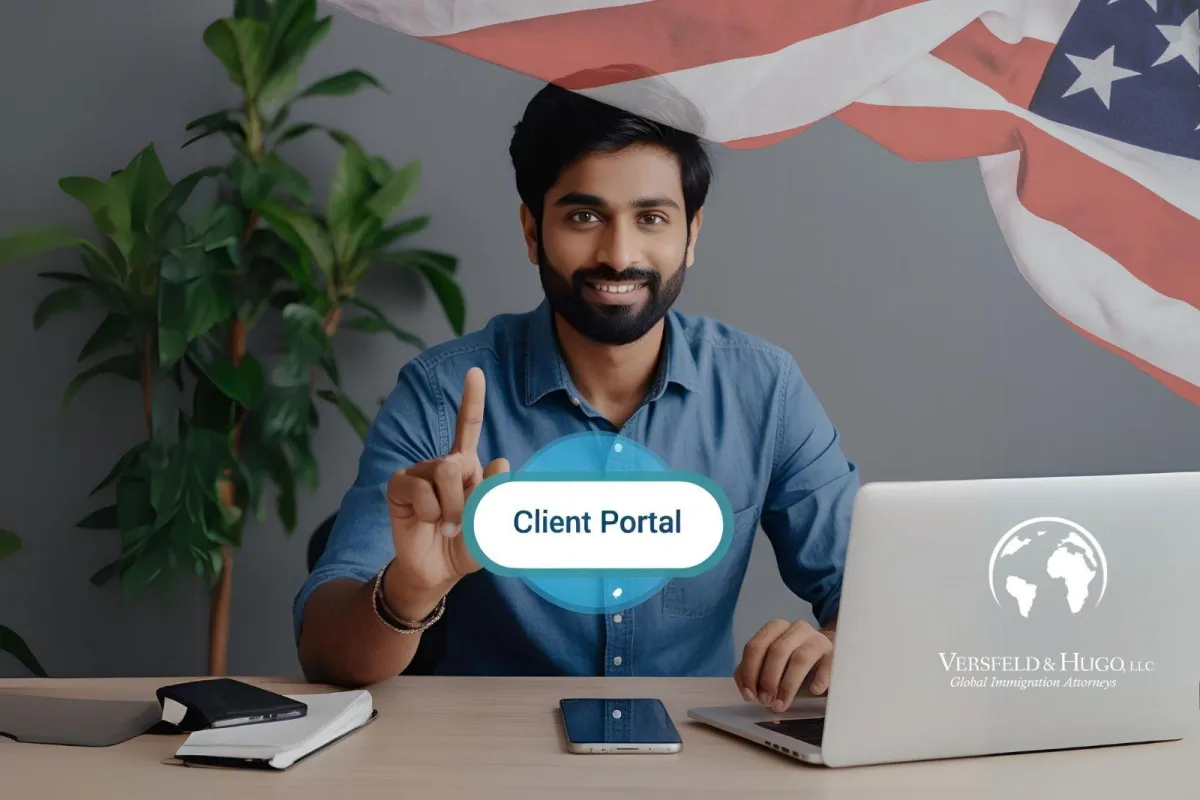U.S. IMMIGRATION
Versfeld & Hugo, LLC provides expert assistance and guidance throughout
your immigration process.
U.S. Immigration Overview
The Difference Between Immigrant and Non-Immigrant Visas
Permanent Visas Overview:

Many people who come to the United States want to become permanent residents of the country. People who have ‘Lawful Permanent Residency’, also known as a ‘Green Card,’ enjoy many benefits, including the freedom to live and work permanently in the U.S. Potential immigrants should know as much as possible about the laws of this country. Our firm is dedicated to helping you get that knowledge with a comprehensive online database of information about all kinds of immigration:
Permanent immigrants to the U.S. are divided into four general categories. Each of these categories may have their own subcategories:
- Family-Based Immigration
- Employment-Based Immigration
- Diversity Visa Lottery
- Asylum/Refugees
Click on these categories on the menus on the side to learn more about the different paths to lawful permanent residency in the U.S.
Employment-Based Immigration
Many people want to acquire permanent residency status in the U.S. because permanent residents enjoy a variety of rights and privileges. One of the most widely-used methods to obtain permanent residency in U.S. is the Employment-Based immigration category.

Family-Based Immigration
Permanent immigration or lawful permanent residency in the U.S. comes with a variety of rights and privileges including the right to permanently live and work in the U.S.If you want to immigrate to the U.S. through the family-based category, your relative who is either a U.S. Citizen or a Lawful Permanent Resident must sponsor you.

Temporary Visas Overview:

The non-immigrant visa classification covers a broad range of visas used to enter the U.S. for work, pleasure or study. Some visas are considered ‘dual intent’; you may attempt to obtain permanent residency (a green card) while under that classification.
Most non-immigrant visas, however, require you establish the demonstration of non-immigrant intent. This means you should demonstrate that you have a permanent residence in your home country that you have no intention of abandoning.
The duration of time you may spend in the U.S. can range from a few days to several years, depending on the visa. In most situations, your spouse and unmarried children under the age of 21 may accompany you on a derivative visa.
Student Visas
Many schools in the United States offer great opportunities for students who wish to further their education and training. The intellectual stimulation and social interaction gained by studying in the U.S. can become vital elements of a student’s growth and development.
Work Visas
The H-1B Visa has become a somewhat mythical visa category over the years. It’s the visa everybody wants and thus it is the visa that receives the most attention. The laws regarding the H-1B Visa constantly change; interested candidates should stay informed about the frequent updates to the law.
Visitor Visas
The Visa Waiver Program (VWP) offers an easy, effective method to travel to the U.S. for business or pleasure. The program enables citizens of participating countries to travel to the U.S. for pleasure or business for 90 days or less without officially obtaining a U.S. visa.
Other Visas
Travelers passing through the U.S. on their way to another country don’t need to be trapped in the airport. The C-1 visa, also known as the transit visa, enables traveling nonimmigrants to leave the airport and visit family or friends or partake in tourism. While you are required to leave the U.S. on your departing flight, this visa allows you to spend your waiting time enjoying your surroundings.
Employer Compliance:
The Immigration Reform and Control Act made all U.S. employers responsible to verify the employment eligibility and identity of all employees hired to work in the United States after November 6, 1986. To implement the law, employers are required to complete Employment Eligibility Verification forms (Form I-9) for all employees, including U.S. citizens. We have represented a variety of U.S. Companies in I-9 audits and investigations. Our firm is often engaged by criminal and corporate counsel to provide expert testimony in Immigration compliance litigation.
We provide seminars to Human Resource Departments on “Best Practices” and do audits of I-9 and Immigration compliance as a preventative measure.
E-Verify and Form I-9
Form I-9 is the core of E-Verify. E-Verify is an Internet-based system that compares information from the Form I-9 to government records to confirm that an employee is authorized to work in the United States.
Although E-Verify uses information from Form I-9, there are some important differences between Form I-9 and E-Verify requirements.
Other Resources
USCIS’ Handbook for Employers – Guidance for Completing Form I-9
Immigration and Customs Enforcement IMAGE Program
Small Business Administration Hiring
DHS Office for Civil Rights and Civil Liberties (CRCL)
Social Security Administration
Department of State
Office of Special Counsel for Immigration Related Unfair Employment Practices

© 2024 Versfeld Law. All rights reserved. | Privacy Policy | Terms and Conditions | Legal Disclaimer | Powered by DNA Super Systems







